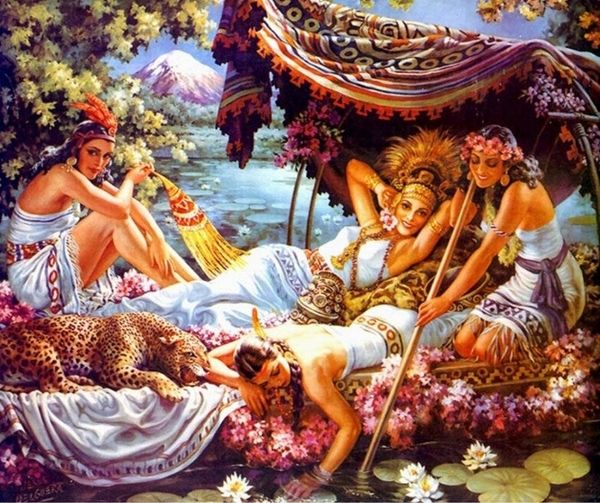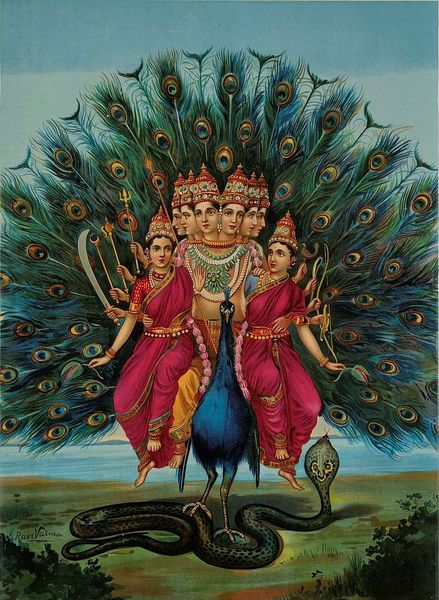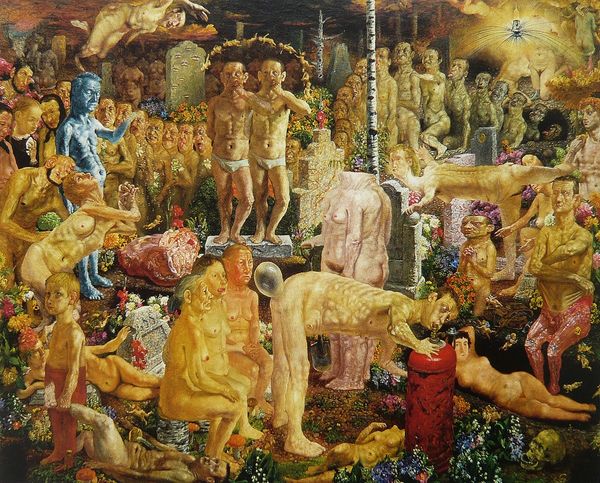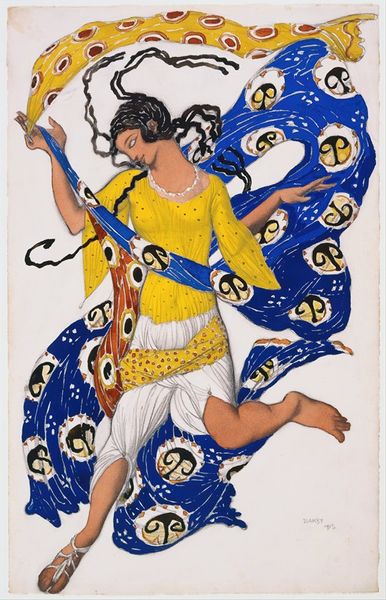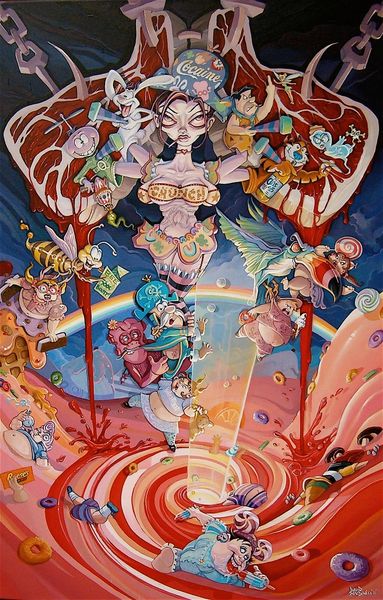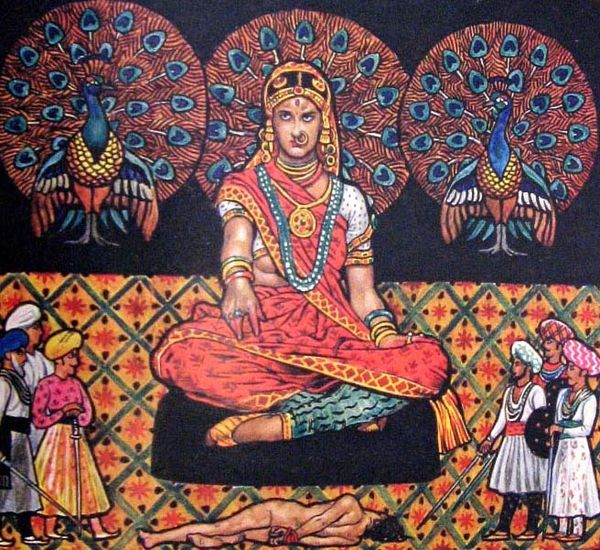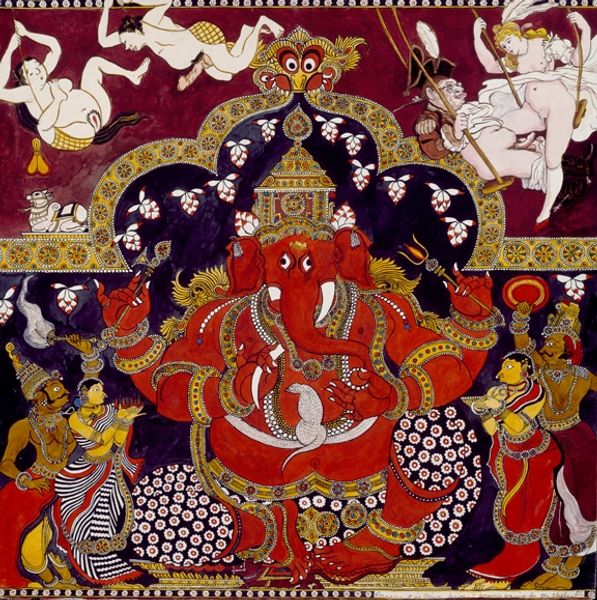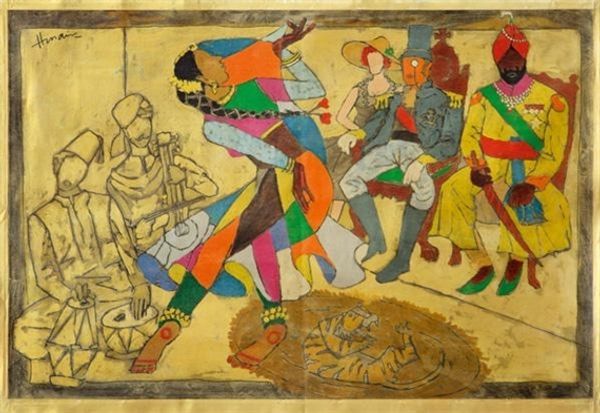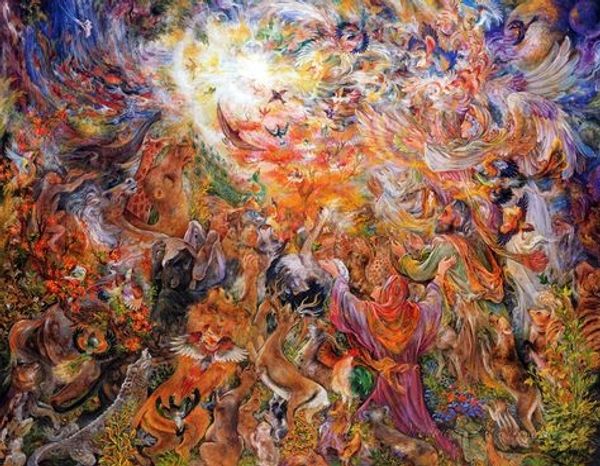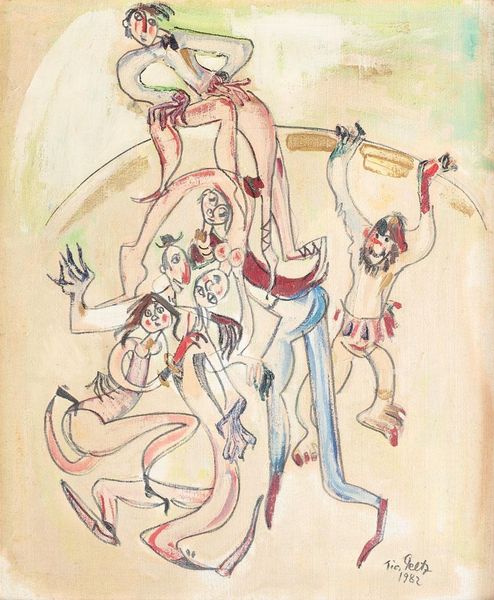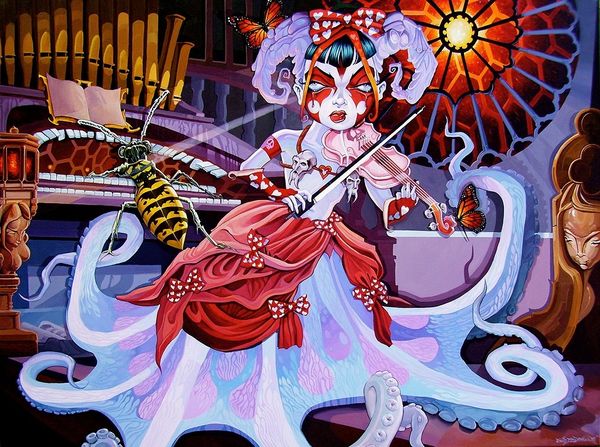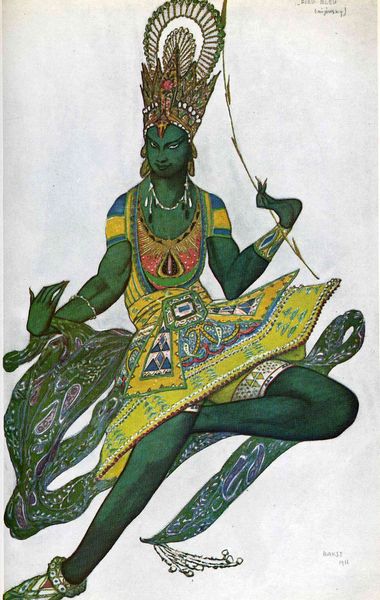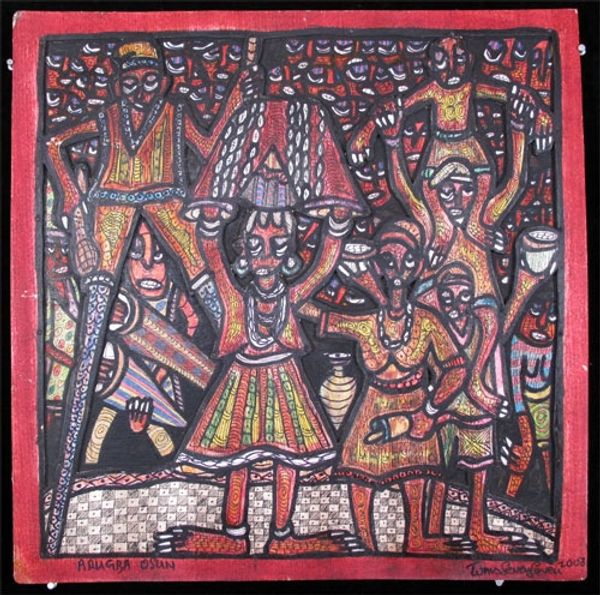
tempera, painting
fairy-painting
narrative-art
tempera
painting
figuration
orientalism
history-painting
Copyright: Public domain
Curator: What a fascinating piece. This is Byam Shaw’s "Garden of Kama," created in 1914 using tempera. The term “Kama” refers to love, desire, or pleasure in the Hindu tradition. Editor: My first impression? It's overwhelmingly fantastical and kind of jarring. There’s a sense of eroticism, sure, but almost like it's filtered through a colonial gaze. I’m immediately questioning its relationship to actual Indian visual culture of the time. Curator: Indeed. Shaw, like many European artists of his period, was heavily influenced by what was termed ‘Orientalism.’ We see the exoticized presentation of Eastern cultures filtered through a Western lens. Editor: Precisely. Looking at the figures—the semi-nude women dancing, the flying figures above—they strike me as an outsider's vision, exoticizing female sexuality. Are they representations of goddesses or celestial beings or simply fantasies projected onto the 'Orient'? Curator: It is likely a blend. Shaw studied the prevailing orientalist trends and the Pre-Raphaelites and drew inspiration from diverse symbolic languages. For example, Kama with his flowered bow stands on his ‘vahana’ which, typically, is a parrot. Kama's presence signifies not only erotic love, but beauty, auspiciousness, and refined culture. Editor: True, but whose culture is being refined here? How are those symbols being re-presented to Victorian English viewers? And at what cost to any authentic cultural narrative? The flag being carried on the right, which appears to include a makara figure on the finial, only compounds the uneasy blend. Curator: I can appreciate that perspective. From a symbolist standpoint, the animals like peacocks and other exotic birds, and flowering trees contribute to a sense of abundance, enchantment, and fertility. This ties into Kama's dominion over the senses. He rules over attraction, but that dominion is not merely carnal but extends to joy, artistry, and the pleasures of life. Editor: Still, understanding that symbolism doesn't absolve the artwork from its problematic colonial overtones. The visual pleasure seems intertwined with objectification and a simplification of complex traditions into a spectacle. Curator: Fair enough. It requires deeper introspection. Thank you for highlighting such a complex intersection. Editor: Indeed. It serves as a potent example of the complications when we encounter history represented visually. It leaves me wanting to find more work by Indian artists offering their perspectives and narratives on themes of Kama, love, and desire.
Comments
No comments
Be the first to comment and join the conversation on the ultimate creative platform.
